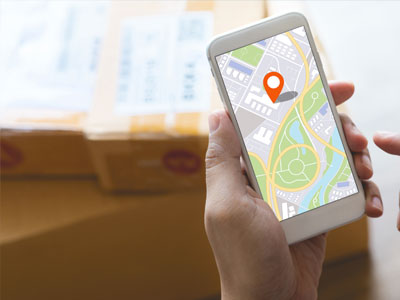Implementing sustainable practices allows companies to improve productivity while decreasing carbon footprints. A simple change in the supply chain has the ability to go a long way. From sustainable packaging to eco-friendly delivery logistics, many companies are seeking solutions that minimize ecological impact. Here are five ways to make your supply chain green:
Just-in-time
Just-in-time supply chain management is the process of placing materials in the right place at the right time. Efficiency in JIT management allows organizations to avoid excessive inventory and reduce costs. Companies that have trouble managing their inventory often suffer from overspending on warehouse and material fees. Implementing a practice that optimizes inventory management not only assists companies in operating a lean operation but also allows them to limit excess inventory. Implementing a JIT strategy allows companies to utilize all available resources and avoid overproduction.

Route Optimization
Efficiency is key in every mile. Delivery route optimization allows supply chain management to minimize inbound and outbound transportation miles. Poor route optimization has been a pain point for years, but it doesn’t have to be. The best route optimization software can lower operational costs while providing the ability to decrease a company’s carbon footprint.
Efficiency in transportation is crucial as the largest portion of carbon emissions is currently produced by trucks. Route optimization is an easy solution that can help a company reduce its carbon footprint. OneRail’s route optimization feature allows shippers to optimize delivery routes while taking into the consideration of economy and price.
End-to-End Visibility
Real-time visibility throughout the entire supply chain not only helps streamline operations but also helps to optimize operations. End-to-end visibility allows companies to recognize pain points. Having data that eliminates blind spots allows management to fine-tune operations. For example, a transportation management system (TMS) tracks each move and provides management with data. This allows companies to view the bigger picture and zoom in to determine weak points. Supply chain visibility can help companies lower their carbon footprint by determining ways to improve, consolidate, and reduce resources
Reverse Logistics
Reverse logistics involves moving a product through a reversed flow of the supply chain. When you think about reverse logistics, common use cases such as customer returns or weekly delivery replacements come to mind. However, reverse logistics practices are also implemented to reduce companies’ waste generation. Companies can set up a system that encourages the recycling of old or defective items. This strategy is often referred to as a closed-loop system. Items are sent back to their original source to either be repurposed or recycled. Reverse logistics is a great practice for companies who manufacture hard-to-dispose products.
Green Packaging
Utilizing sustainable materials in packaging is a great way to decrease costs while lowering carbon emissions. Such materials include bamboo, linen, and cork. Sustainable packaging can help companies reduce their footprint in all stages of a product’s life cycle – from producer to consumer.
OneRail offers a seamless omnichannel fulfillment platform that puts customers first by reducing shipping time and cost, providing 100% visibility, and delivering a responsive, real-time customer experience.


